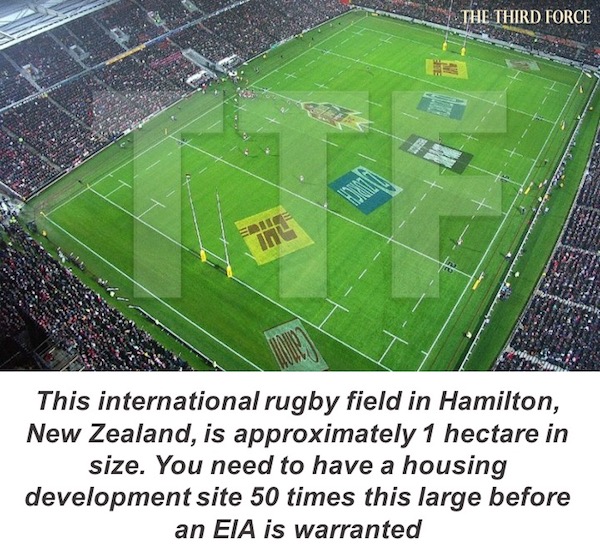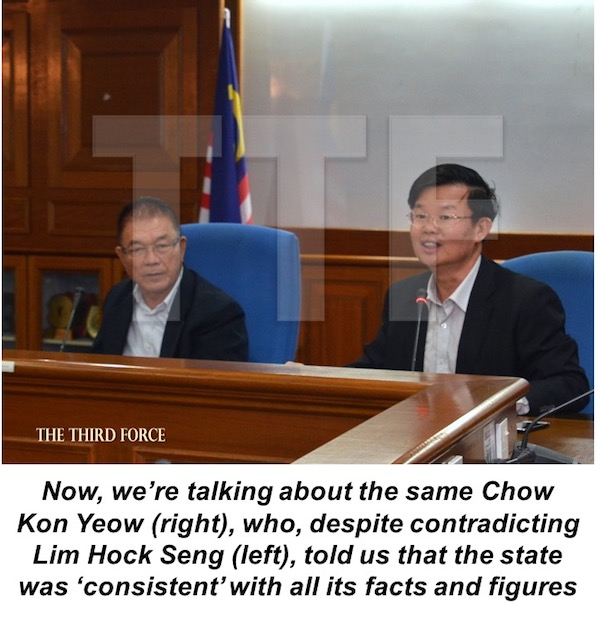
It implies that the committee was given reasons so compelling that it chose to ignore threats posed by the granite quarry. More importantly, it tells you that over 11 agencies assessed risks involved and gave the committee the go ahead. Question is, will the Chief Minister now make public the findings of these agencies?
THE THIRD FORCE
A killer landslide that occurred in Tanjung Bungah last Saturday brought to view some of Lim Guan Eng’s worst attributes. Despite ignoring protests by residents and a study conducted by researchers at Universiti Sains Malaysia (USM), the Chief Minister of Penang insists that no element of negligence existed on the part of his administration.
Now, I find that extremely hard to believe.
The reason being, my own research points not only to elements of gross negligence, but a cover up on the part of the developer, Taman Sri Bunga Sdn Bhd. It appears that these guys are concealing the likelihood that five or so illegal workers may still be buried at the disaster site. While the tragedy is getting to look more and more like involuntary manslaughter, the Chief Minister insists that it was nothing more than your typical, everyday worksite accident.
And that begs the question – is Guan Eng attempting to protect the developer the way he protected Edmund Gan Eu Lee? In the case of the illegal factory at Kampung sungai Lembu, the Chief Minister attempted to conceal negligence on his part by getting his exco, Phee Boon Poh, to pretend as if the DoE’s findings were never made known to him.
In the case of last Saturday’s manslaughter – and it was manslaughter, no matter what anyone says – he insists that the DoE never requested an Environmental Impact Assessment (EIA) to begin with. According to him, had there been such a request, his administration would gladly have complied, meaning, it is the DoE that faulted and not his administration proper.
Let me run that by you again.
Guan Eng is telling us that the DoE erred by not requesting an EIA study. According to him, had the DoE done so, the state would have been forced to reject the developer’s proposal. But because the DoE was so ‘careless’ as to not request a study, the state had a free hand in deciding if the project could go on and proceeded to give the developer the go ahead.
Makes sense?
Not according to the guys at the DoE, who revealed that the onus is never on the department, but the developer (or investor) to determine if an activity (in this case, the construction of a high-rise) falls within range of requirements provisioned under the Environmental Quality (Prescribed Activities) (Environmental Impact Assessment) Order 1987.
Digging deeper, I discovered that a housing development project only required an EIA if the proposed development spanned an area of 50 hectares or more. That’s 50 hectares, or 5,381,950 square feet, and not 50 acres or 50 square feet. Now, do you have any idea how large an area 50 hectares is?
To give you an idea, imagine a typical sports field surrounded by 400 metres of running track. Such a field would span 1.12 hectares, meaning, you would need at least 45 fields to end up with a 50 hectare housing development area. But my recent visit to Lengkok Lembah Permai told me that the area being developed was anything but the size of 45 track fields.

So you see, the Chief Minister may have pulled yet another Sungai Lembu on you guys. Either that, or he was ill advised by the Majlis Bandaraya Pulau Pinang (MBPP) and led to think that an EIA study was warranted regardless the area being developed. But thankfully, his advisors ‘remembered’ to tell him of another stipulation under the Environment Quality Act (EQA), 1974.
Accordingly, housing developers whose activities aren’t subject to the Environmental Quality (Prescribed Activities) (Environmental Impact Assessment) Order 1987 are required to have proposed worksites evaluated for suitability. Through this exercise, developers will be forewarned of possible hazards should the proposed sites not fall within provisions of set-back or buffer zones.
And that’s exactly what happened.
In a letter dated the 23rd of January 2015, the DoE informed the developer that the proposed construction site was approximately 169 meters from a granite quarry, a distance it said was too close for comfort. According to the department, the distance fell short of buffering guidelines as stipulated by the Guidelines For Sitting and Zoning of Industrial Areas. But what did Guan Eng and his guys at MBPP do about this?
Absolutely nothing.
Instead, they went with recommendations by a One-Stop Centre Committee (OSC) that approves all development plans on the island. At least, that is what Chow Kon Yeow told a press conference on Monday, the 23rd of October 2017.

According to him, the OSC took in views of more than 20 external and internal agencies before deciding to approve the construction project.
“The DoE may have objected to the plan, but after considering the views from all the agencies in OSC, the decision was made to approve the project,” he told a press conference at Komtar on Monday.
What does this imply?
It implies that the committee was given reasons so compelling that it chose to ignore threats posed by the granite quarry. More importantly, it tells you that over 11 agencies assessed risks involved and gave the committee the go ahead. Question is, will the Chief Minister now make public the findings of these agencies in the spirit of Competency, Accountability and Transparency (CAT)?
Only then can we know for sure what was so compelling that it prompted the state government to ignore theDoE.



